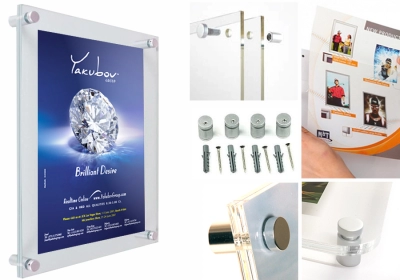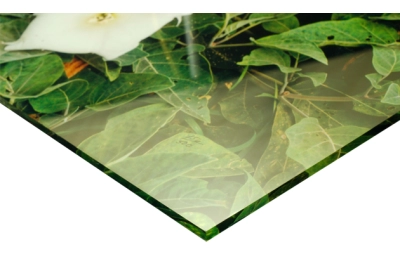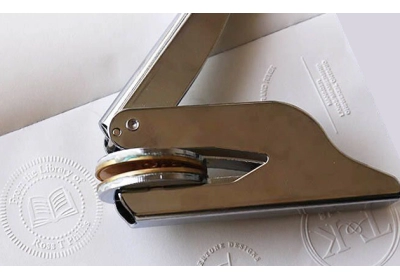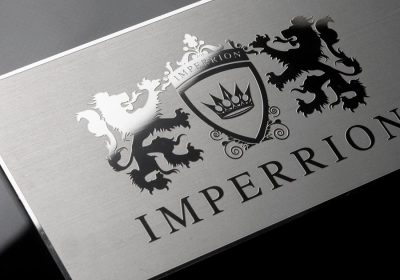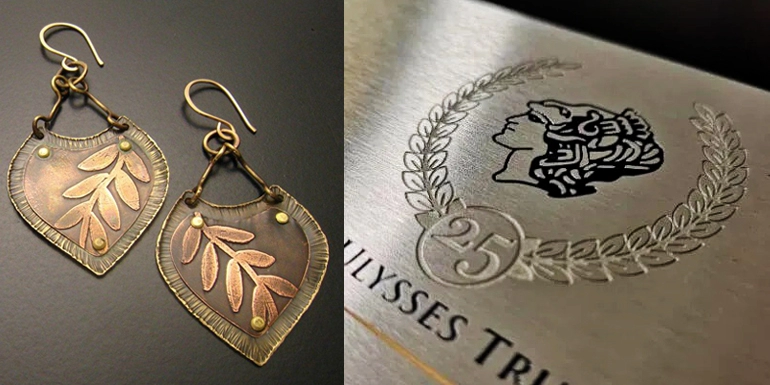
Handmade Etching Metal vs Laser Machine Engraving
Etching Metal is a method of engraving that uses a high pressure temperature regulated chemical spray to remove material to create a permanent etched image or shape in metal. A mask or resist is applied to the surface of the material and is selectively removed, exposing the metal, to create the desired image. The material is then placed in an etching machine, typically a conveyorized machine consisting of an etch chamber and a rinse chamber. An etching machine harnesses the corrosive reaction between the chemical and the material and amplifies the effect by heating the solution and spraying at high pressure. The chemical spray dissolves the unprotected metal areas to etch the material. The depth of the etch is controlled by conveyor speed. A slower pass will result in a deeper etch whereas a faster pass will produce a shallower etch. After etching the resist layer is removed .
The most commonly used and least hazardous etchant is Ferric Chloride ( FeCl3 ). Ferric Chloride will etch stainless steel, brass, bronze, copper, nickel, aluminum and more. It’s a versatile chemical that’s widely available and inexpensive. There are a few materials it won’t etch. Due to their physical properties, Magnesium and Zinc require an entirely different processing method, whilst the chemistry required to etch titanium is extremely hazardous and very few companies have the capability to do so.
Dry Film Method for Etching
The most common method of etching is called photochemical etching. In this process the material is cleaned and then laminated with a UV-sensitive photoresist. A photomask is created by printing the artwork as a negative onto a clear piece of film. The photomask is placed on top of the material in an exposure unit and a vacuum is drawn to ensure contact between the phototool and the metal plate. The plate is then exposed under UV light that allows the areas of resist that are in the clear sections of the film to be hardened. After exposure, the plate is "developed", washing away the unexposed resist and leaving the areas to be etched unprotected. Photochemical etching is a process that has stood the test of time and consistently delivers excellent results. It can reproduce extremely fine detail. However, it can require a big commitment of space and additional equipment to get started. One way around this is to use your existing equipment to handle the artwork portion of the process.
Laser Cut Engrave Metal
Using a laser to create the mask is one of the simplest and easiest ways to get into chemical etching. This process has become more refined over recent years and it’s now possible to achieve results on par with Dry film, crucially matching both the level of depth and detail. The material is spray coated with a laser engravable etch resist which is then cured in an oven for 15 mins at 150°f. Once dry the material is ready to engrave. The laser removes the resist layer, exposing the bare metal underneath, to create the mask. The material is then ready to etch. This process is compatible with both Co2 and fiber laser wavelengths although settings will vary from system to systems.
Handmade Etching using Screen printing method
There are a number of screen printable etch resists available that can be printed directly onto the material to create the mask. This method is ideal for high volume production and is widely used in the manufacture of industrial nameplates. Vinyl can also make excellent etch resist and is particularly useful for processing very large pieces that are difficult to image by other means although the amount of detail achievable is limited.
It’s often said that etching is more of an art than a science, which is fitting as many of the techniques still in use today owe a debt to the pioneering work of the Dutch master Rembrandt. It’s a rewarding and creative process with endless possibilities. Chemical etching is a great way to increase your range of products and services whilst utilizing the skill and equipment already at the heart of your business.
Advantage of Handmade Etching Metal
The main advantage with manual or handmade etching is that it can scratch the entire surface area of the material at the same time and can add coloring such as for Logo and company name or coloring to make it look natural. With manual etching, the amount and size of the etching area has a much cheaper price effect than using the machine at the processing time. This means that you can etch large designs in depth for a fraction of the cost.
Manual Etching produces a smooth finish, free from the effects of the resulting laser heat (burning). There is no heat distortion associated with processing (unlike lasers) and no tool wear that can occur when processing hard metals such as stainless metals with this engraving method.
The increased etching depth makes color fillable easily allowing for logo reproduction and for signs. Another advantage of working with Manual Etching is the variety of materials and finishes available, from aluminum, stainless, metal to brass.
Etching has many varied uses within the industry for signnames, product labels including outdoor and indoor signage, placards, industrial signage, medals, special gifts, jewelry, and more. The quality and durability of the engraved metal make it the ideal solution for many applications. Manual etching is also widely used in the production of signage and machineries for thin metal components for use in the electronics, automotive and other industries.

